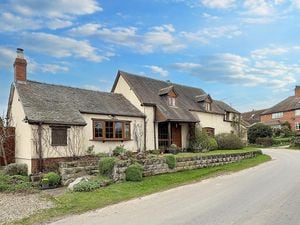Picture shows how Victorian Newport knew how to party
Say what you like about the Victorians, but they knew how to throw a street party, as this view of celebrations in Newport High Street shows.
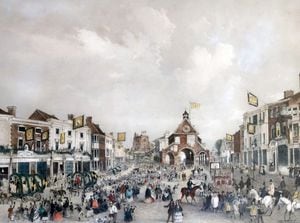
And it demonstrates some of the changes in the town centre over the past 150 or so years, like the loss of the old town hall, seen here plastered with posters about the Crimean War – but also how significant parts have stayed more or less the same.
Caroline Davies of Newport firm Davies White & Perry has given permission for Newport History Society to photograph and publish this picture of hers, a tinted engraving of the High Street in 1857.
Society archivist Linda Fletcher says: "The occasion is the celebrations at the time of the coming of age of Thomas Fletcher-Boughey on April 25, 1857.
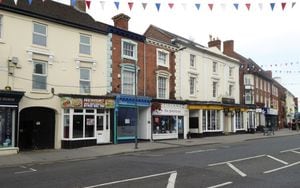
"The painting was done by Henry Lark Pratt (1805-1873) who trained in the porcelain industry, but did many paintings, chiefly of Staffordshire and Derbyshire landscapes and stately homes.
"In the days when the town’s wealth was to a large extent created by the wealth of the local landed estates – the Leekes, the Boroughs, the Leveson-Gowers, Bougheys and the Coates families – Newport townspeople were obviously keen to show support of such celebrations and took part enthusiastically.
"The buildings on the west side can be compared with today and are all still easily recognisable.
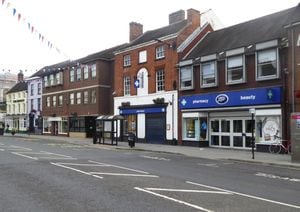
"To the left we start with the Kings Arms with its impressive yard gate, which can still be seen today. It's now Evenett & Bishop and Newport Kebab House. This was owned by James Lockley who was also a farmer at Littlehales, and you can see, if you look closely, that he also sold his meat at the front of the inn – you can see haunches in the shop front.
"Next door were Edward Peplow – a tailor and James Barlow – a ‘fancy goods,’ that is, ornaments, shop. It's now Glass House and Happy Smiles
"After this there is the The Crown Inn, but by 1857 it had become two shops. These were Mr Gosnell’s china shop and Mr Dunning, a tailor, which is now Davies White and Perry.
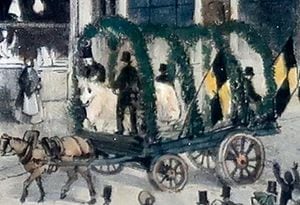
"Next to the Crown you can see Wycherley's distinctive half burgage plot refurbished by Edwin Whittingham at the turn of the 20th century.
"On the right hand side the buildings are less clear, as many have been demolished.
"Far right is the Raven and Bell Inn, now demolished – now Boots. The next building is still here and is the northerly part of Boots. A chemist called Mr Huxley owned this and he also owned a cement business at the old windmill at Broomfield Place.
"Beyond this are Boughey House and the Barley Mow, which are the same as today.
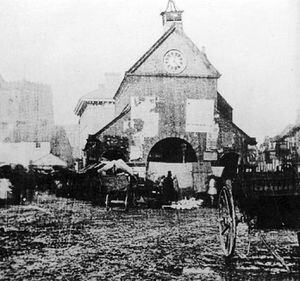
"After the Barley we see a building at right angles to the street. This ancient timber framed building was on the corner of Stafford Street. This was the White Horse and was demolished in 1859 with all the surrounding properties to make way for the new market.
"T W Picken, a local chemist and antiquarian, described that the ‘William Gregari 1615’ sign now fixed to The Guildhall came from either this building or next door. It is interesting to note that the sign was put on the Guildhall by our Victorian ancestors to give the Guildhall some degree of age, but dendrochronology has given us a date of 1480s, which is way further back than they could have imagined.

"The picture shows at the centre the old William Adams town hall, built with money from William Adams who founded the Grammar School, which was also demolished just prior to the new town hall being built in 1860. Posters about the Crimean War are high on its walls.
"Behind it, to the left, are the church with small houses close by, called ‘The Church Houses’. These were squashed very close into the church yard, and were demolished in 1904.
"Also you can see the Butter Cross market in front of them. Today the footprint of the Butter Cross can be seen on the pavement surrounding the stone cross, which it used to cover.
"The picture shows three carts with cattle in each, decorated with greenery. T W Picken wrote about such civic occasions. He called them ‘Roastings’. He said that the oxen, and also sometimes sheep, were paraded on wagons. These would then be butchered, roasted and given to the poor with a portion of bread each.
"We can see that the local businesses are decorated with flags and banners declaring 'Long life and happiness to the heir of Aqualate' and images of the Fletcher-Boughey crest – a buck’s head.
"Also on the street we can see, to the right, a band playing in their red uniforms. Ladies watch the parade in their finest crinolines and large paisley shawls, the latter made fashionable when Queen Victorian bought some in the 1840s."

